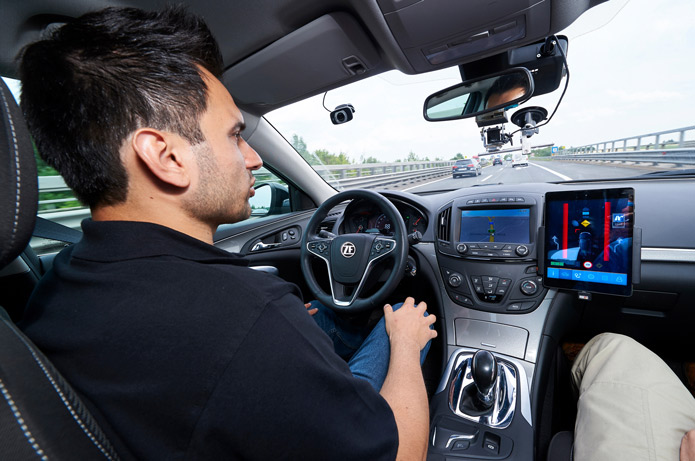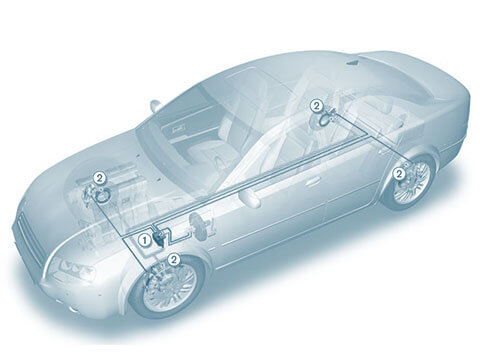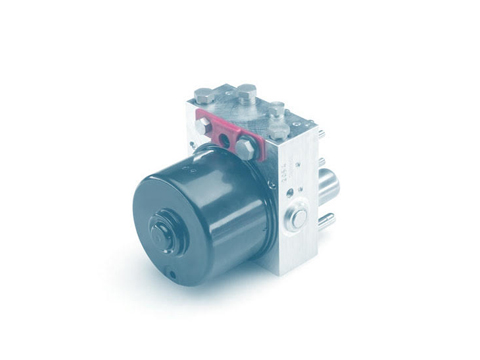Autonomous driving
Autonomous driving refers to the purposeful movement of self-driving vehicles or transport systems without any intervention by the human driver.
Function
SAE International (Society of Automotive Engineers) makes a distinction between five different levels of autonomous driving.
Level 0: No automation
The driver is in full control of the car, even if supporting systems such as ABS or ESP are available.
Level 1: Assisted driving
The driver is permanently responsible for longitudinal and lateral guidance, but is supported in specific cases by assistance systems which, for example, indicate errors or inattentiveness by means of acoustic or visual signals. In some cases, they can also prevent errors by temporarily assuming control of steering or acceleration/deceleration by way of settings selected by the driver, which can be overridden at any time. These systems can be switched off and usually only work in certain speed ranges. Assisted driving is something that is widespread these days: For example, the latest lane departure warning systems detect when a vehicle leaves the road and can steer the car back into the lane automatically. Distance control systems, for example, are capable of automatically regulating the distance to vehicles in front by accelerating or braking to adjust the speed of the vehicle.
Level 2: Semi-automated driving
At level 2, the system has full access to the accelerator, brake and steering. However, the driver must be able to monitor the system and intervene at all times. Semi-automated driving is already available. One example is the traffic jam assistant, which combines an automatic distance control system with a lane departure warning system. This driver assistance system can accelerate, brake and steer.
Level 3: Highly automated driving
At this level, the vehicle monitors the environment in full. The driver may engage in non-driving activities. However, if the systems reach their limits, the driver must be in a position to intervene.
Level 4: Fully automated driving
At the fully automated driving level, the vehicle drives autonomously. The driver can fully engage in non-driving activities and no longer needs to be prepared for sudden intervention.
Level 5: Autonomous driving
At the autonomous driving level, the technology in the car handles all traffic situations. Passengers no longer have any driving duties. Autonomously driving cars do not require a steering wheel, accelerator or brake pedal.
Sensors
The basis for autonomous driving is a comprehensive environmental sensor system. The purpose of an environmental sensor system is to enable accurate and extensive 360-degree perception of the vehicle’s entire surroundings. An environmental sensor system is usually implemented by a whole series of different sensors (camera, lidar, radar). They detect the surroundings of the vehicle, i.e. distance to obstacles and other road users, as well as their direction and speed of movement. These parameters are converted into electrical signals, which are evaluated in special control units and translated into actions.
Car2Car/V2X communication
From level 4 of autonomous driving onwards, and especially in mixed traffic, cooperative driving is indispensable. Communication between cars (Car2Car communication) or communication between cars and the traffic infrastructure (e.g. traffic lights) acts as an extension of sensor technology. Car2Car/V2X communication therefore helps to improve traffic flow and driving safety.
Artificial intelligence
The incoming data from the environmental sensor system is analysed and interpreted by powerful software in the form of adaptive algorithms. For example, this artificial intelligence is able to recognise whether an object detected by the sensor system is a car, a pedestrian or a traffic light. In addition, the software detects whether and in which direction the detected objects are moving and at what speed. From these interpretation patterns, the artificial intelligence can also deduce the probable future behaviour of various objects.
Safety
In the case of highly automated and autonomous driving, the system must ensure the safety of the passengers. To safeguard the system against failures, safety-critical sub-systems such as the steering, brakes, vehicle electrical system and data processing system must be designed redundantly and controlled independently of each other. In the event that a sub-system fails, the corresponding redundant system is always able to take over.







